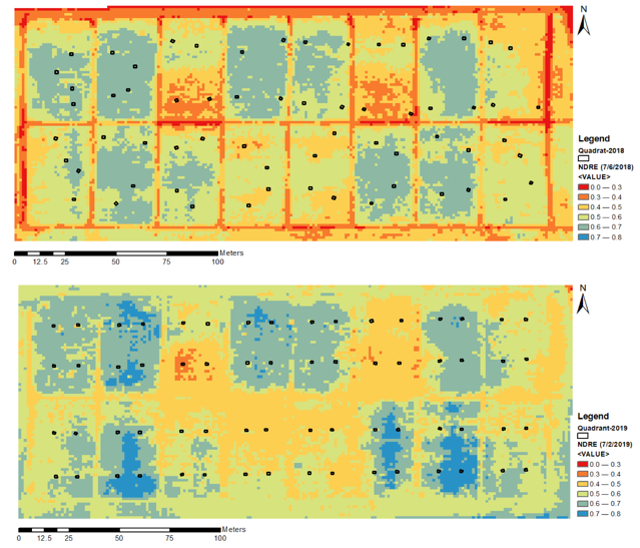Aerial Imagery Can Detect Nitrogen Fertilizer Effects on Biomass and Stand Health of Miscanthus × giganteus
Themes: Feedstock Production
Keywords: Biomass Analytics, Field Data
Citation
Namoi, N., Jang, C., Robins, Z., Lin, C.H., Lim, S.H., Voigt, T., Lee, D.K. March 14, 2022. “Aerial Imagery Can Detect Nitrogen Fertilizer Effects on Biomass and Stand Health of Miscanthus x giganteus.” University of Illinois Urbana-Champaign. DOI: 10.13012/B2IDB-0718291_V1.
Overview

Miscanthus × giganteus (Miscanthus) is a warm-season perennial grass grown for bioenergy feedstock production. Nitrogen (N) fertilizer management is crucial for the sustainability of Miscanthus production. In our two-year study (2018 and 2019), we investigated the role of vegetation indices (VIs) in evaluating N fertilization (0 N, 56 N, 112 N, and 168 N kg ha−1) impacts on Miscanthus biomass yield and stand health. The flight campaigns were conducted early, middle, and late during the summer growing season. Among the VIs, mid-summer growing season NDRE provided the best prediction of fresh biomass (R2 = 0.87 and 0.97) and dry biomass (R2 = 0.89 and 0.97) in 2018 and 2019, respectively. The VIs generally showed that it was possible to distinguish between 0 N and 168 N treatments, but neither 0 N and 56 N kg ha−1 nor 112 N and 168 N kg ha−1 could be separated. The results from this study highlight the importance of moderate application of N (112 kg N ha−1) in improving and maintaining the stand health and biomass yield of Miscanthus over time and suggest that mid-summer growing season VIs, NDRE in particular, can be useful for assessment of Miscanthus stand health and biomass yield.
Data
- NDVI
- NDRE
- GNDVI
- Weather data